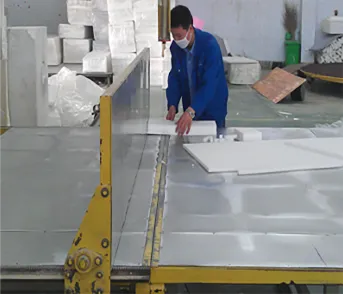Comfortable and Protective Bedding Solutions for Hospital and Home Care Settings
Understanding Hospital Bed Pads A Comprehensive Guide
In a healthcare environment, comfort and hygiene play crucial roles in patient care. One essential component that often goes overlooked is the hospital bed pad. These pads, designed specifically for hospital beds, serve multiple purposes ranging from enhancing patient comfort to ensuring cleanliness and preventing skin complications. In this article, we will explore the benefits, types, and maintenance of hospital bed pads, helping you make informed decisions for better patient care.
What Are Hospital Bed Pads?
Hospital bed pads, often referred to as hospital mattress pads or bed underpads, are absorbent sheets designed to be placed over beds in healthcare settings. Their primary function is to protect the mattress from moisture, stains, and damage, while also providing a layer of comfort for the patient. Made from various materials, these pads can be either disposable or reusable, depending on the specific needs of the healthcare facility.
Benefits of Hospital Bed Pads
1. Comfort and Support Hospital bed pads enhance patient comfort by adding an extra layer of cushioning. This is particularly important for patients who may be bedridden for extended periods. Proper support can help alleviate pressure points and minimize the risk of bedsores or pressure ulcers.
2. Hygiene and Cleanliness Hospital bed pads are designed to absorb moisture effectively, whether it be from incontinence, spills, or sweat. By protecting the mattress from moisture, these pads help maintain a clean environment, which is essential in preventing infections and promoting overall patient health.
3. Cost-Effectiveness While disposable bed pads are available, reusable options can provide a more cost-effective solution for healthcare facilities. Investing in high-quality reusable pads can save money in the long run by reducing the frequency of mattress replacements and laundry costs.
4. Conveniency Most hospital bed pads are designed for easy use and swift changes. They can be quickly placed on the bed and removed when needed, saving valuable time for healthcare staff.
Types of Hospital Bed Pads
Hospital bed pads come in various styles and materials, catering to different patient needs and preferences. Here are some common types
1. Disposable Bed Pads These pads are designed for single-use and are typically made from absorbent materials combined with a waterproof backing. They are ideal for situations where frequent changes are necessary, such as for patients with incontinence.
hospital bed pads

2. Reusable Bed Pads Reusable options are often made from durable fabrics that can withstand multiple washes. These pads offer a more sustainable choice for healthcare facilities focused on minimizing waste while providing comfort and protection.
3. Foam or Gel Pads For patients at higher risk of developing pressure ulcers, specialized foam or gel pads can be used. These materials are designed to distribute pressure evenly, reducing the likelihood of skin breakdown.
4. Anti-Microbial Pads Some hospital bed pads are treated with antimicrobial agents to reduce the risk of infection. This feature is particularly beneficial in environments with high infection rates.
Maintenance of Hospital Bed Pads
Proper maintenance of hospital bed pads is essential to maximize their lifespan and effectiveness. Here are some tips
1. Regular Cleaning Reusable pads should be washed regularly according to the manufacturer’s instructions. Using appropriate detergents and avoiding bleach can help preserve the integrity of the materials.
2. Inspect for Damage Before each use, healthcare staff should inspect pads for any signs of wear or damage. Worn pads should be replaced immediately to ensure patient safety and comfort.
3. Proper Disposal Disposable pads should be disposed of hygienically to minimize the risk of infection. They should be placed in designated waste containers to avoid contamination.
4. Storage Store unused pads in a clean, dry environment to prevent contamination and ensure they remain in good condition for patient use.
Conclusion
Hospital bed pads are an essential aspect of patient care, contributing to comfort, hygiene, and overall well-being. Understanding the various types of bed pads, their benefits, and the importance of maintenance can help healthcare professionals provide better care to their patients. By investing in quality pads and implementing effective maintenance practices, healthcare facilities can enhance patient comfort and reduce the risks associated with prolonged bed rest. In the end, prioritizing patient comfort directly translates to better healing outcomes.
-
The Effect of Coconut Foam Mattress Breathability and Humidity Regulation on Improving Sleep QualityNewsJul.03,2025
-
How Wave Mattress Systems Improve Blood Circulation During ImmobilityNewsJul.03,2025
-
The Climate-Adaptive Sleep Revolution: Exploring the Benefits of Cooling Gel Memory Foam MattressesNewsJul.03,2025
-
Exploration of the Role of Coconut Foam Mattress in Preventing Bedsores in the ElderlyNewsJul.03,2025
-
Comparing Wave Mattress and Air Mattress: Which Is Better for Medical Use?NewsJul.03,2025
-
Analysis of Comfort and Environmental Performance of Natural Latex and Coconut Foam MattressNewsJul.03,2025
-
Multi-Layer Construction for Enhanced Performance in Gel Mattress PadNewsJun.24,2025

